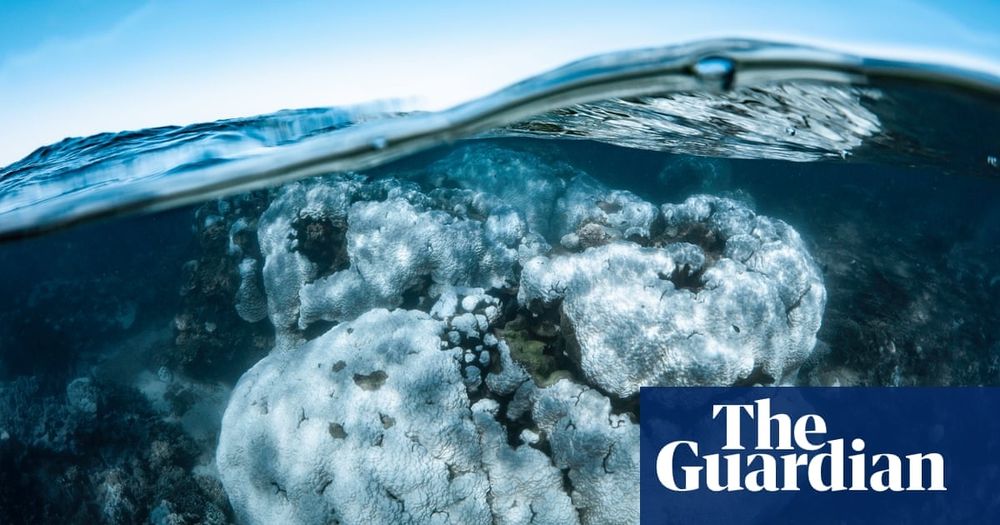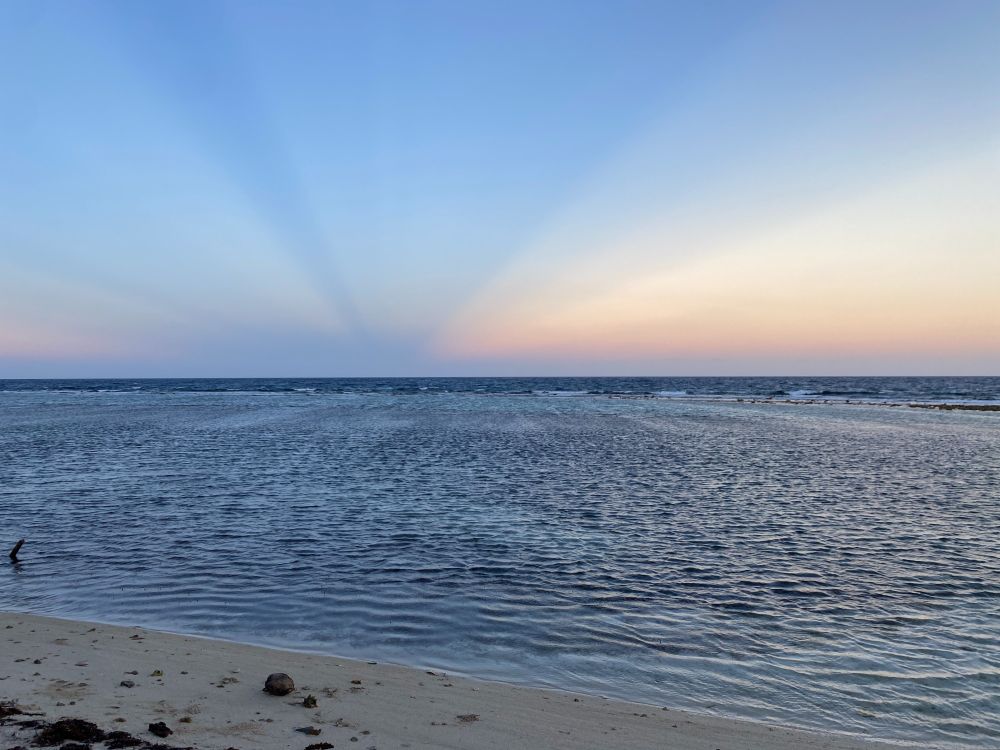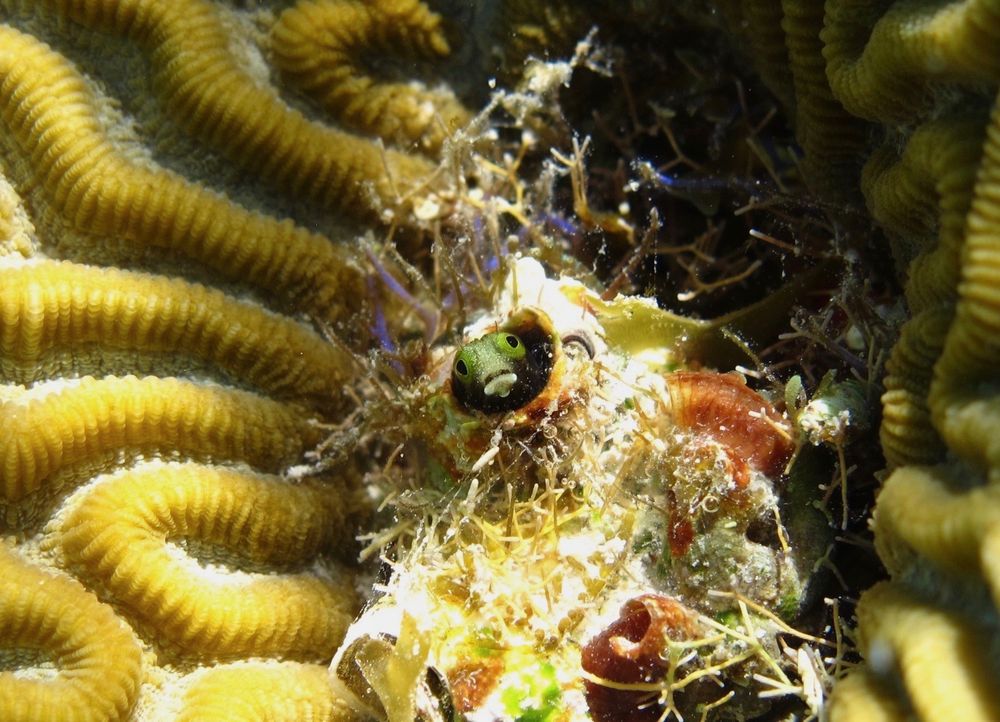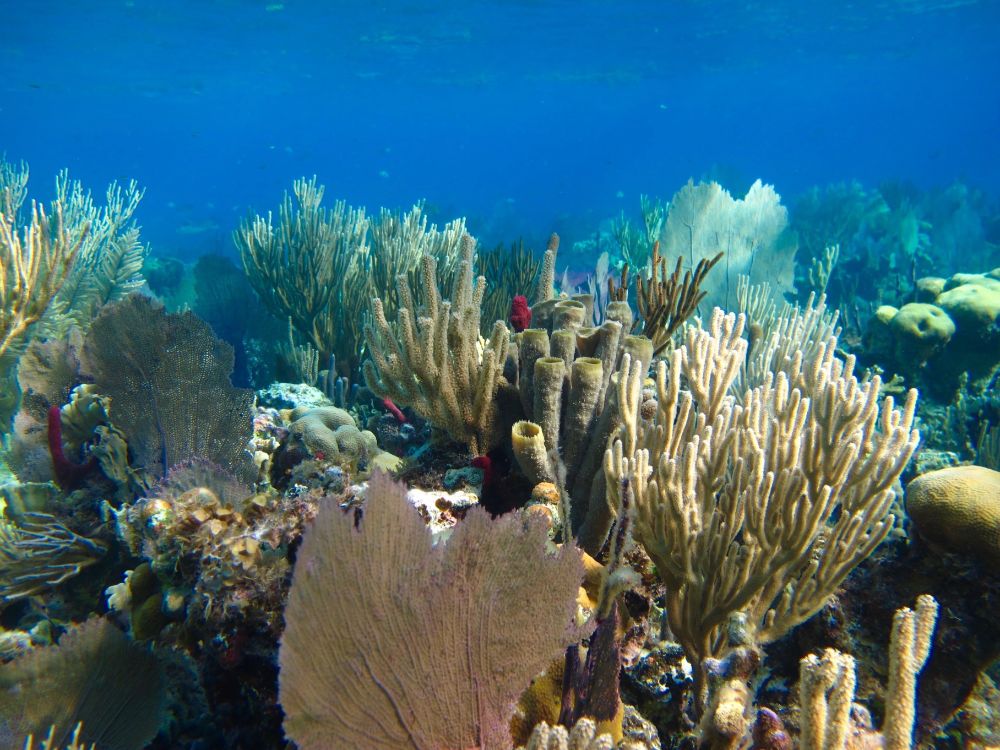💡 One fringing site – LTER5 – remained stable and dominated by Porites rus, showing how distance from shore and hydrodynamic exposure can support resilience even when other fringing sites decline.
22.10.2025 08:10 — 👍 0 🔁 0 💬 0 📌 0
🪸 Nearly two decades of reef monitoring show that fringing reefs ⬇️ degraded while fore reefs ⬆️ recovered, highlighting how local conditions, connectivity, and development – not just ocean heating – shape resilience.
22.10.2025 08:07 — 👍 0 🔁 0 💬 1 📌 0
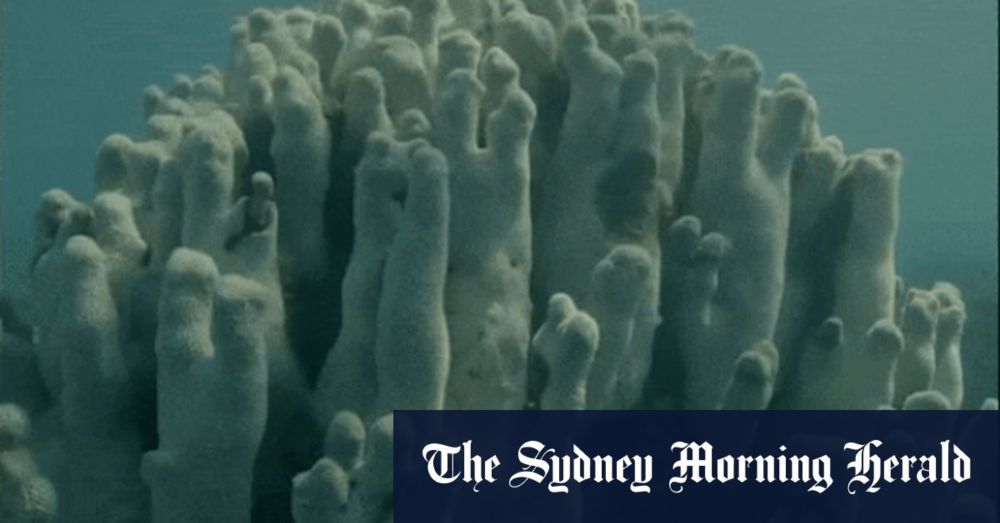
‘You realise your children are probably never going to see Ningaloo the way you saw it’
The west-coast reef has largely escaped the curse of coral bleaching that has blighted the Great Barrier Reef. This year, that’s changed.
#NingalooReef "annual surveys of the northern section of the reef in May found up to 90 per cent of coral had been bleached down to 20 metres depth", the "lowest cover of live coral" observed since 2007
"up to 50 per cent of the examined coral was dead in May" but "more would be dead now"
08.08.2025 05:53 — 👍 55 🔁 31 💬 3 📌 10
Feeling lucky to have seen Ningaloo in its prime. Devastated that my children will never have that chance.
08.08.2025 09:38 — 👍 13 🔁 3 💬 0 📌 0
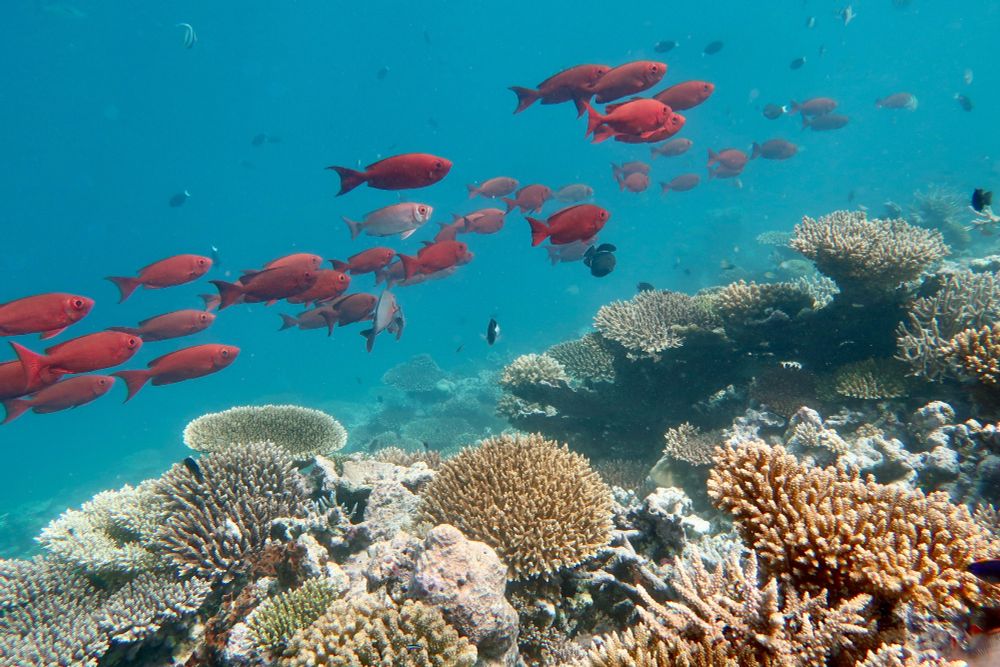
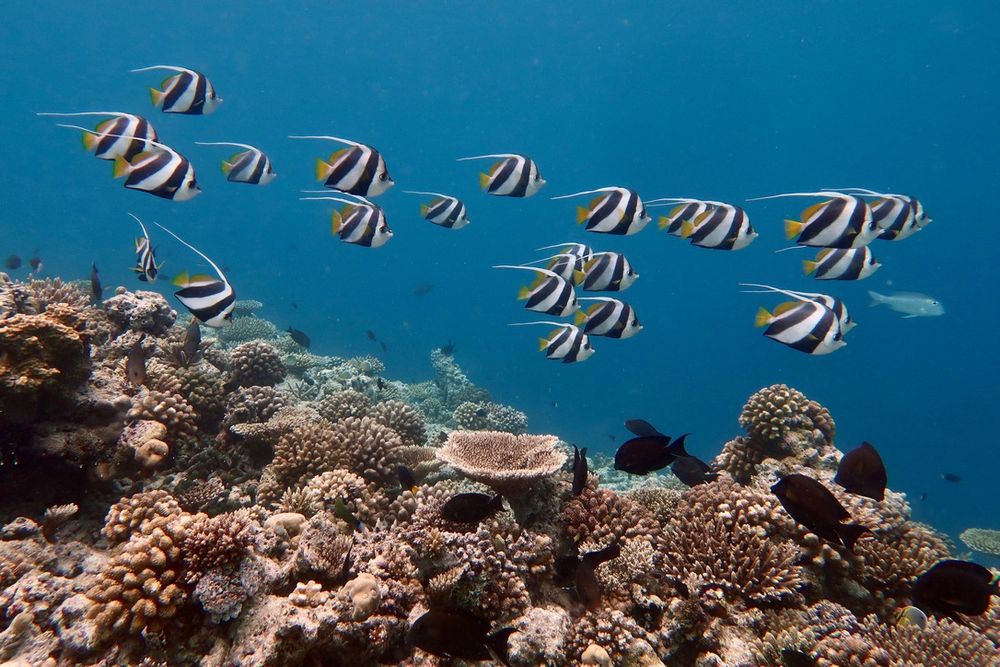
Heard of "Darwin's paradox"? It refers to Charles Darwin's observation that coral reefs are wildly productive despite occurring in nutrient-poor tropical oceans. Reefs are, so the story goes, oases in marine deserts 🏝️...
Turns out that 2/3 of these assertions are very wrong...
🌐
🦑🧪
🧵⬇️
06.06.2025 13:32 — 👍 116 🔁 52 💬 3 📌 3
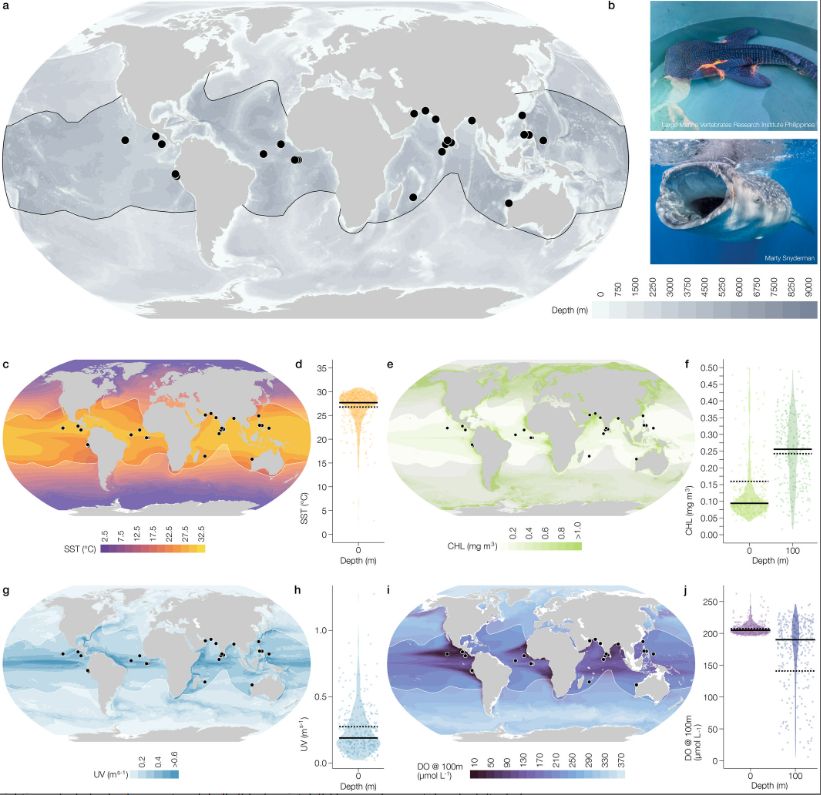
(a) Recorded sightings of whale shark neonates globally (black points). (b) Image of neonatal and adult whale sharks from Large Marine Vertebrates Research Institute Philippines group (b) and Marty Snyderman (b). (c) Whale shark neonates and sea surface temperature (SST, °C averaged for 2005–2019). (d) SST recorded from neonate locations and 10 randomised runs. (e) Whale shark neonates and Chlorophyll-a (Chl-a, mg m3 averaged for 2005–2019). (f) Chl-a at 0 and 100 m depths recorded from neonate locations and 10 randomised runs. (g) Whale shark neonates and current velocity (UV) at 0 m depth (ms−1, averaged for 2005–2019). (h) UV recorded from neonate locations and 10 randomised runs. (i) Whale shark neonates and dissolved oxygen (DO) concentration at 100 m depth (μmol L−1, averaged for 2005–2019). (h) DO concentrations at 0 and 100 m depths recorded from neonate locations and 10 randomised runs. In (d, f, h) and (j) each point represents a single sighting or randomised location, the solid black line is the median value of randomised locations, the dashed black line the median of the observed sightings for each depth, and the violin displays the density distribution of all locations. IUCN whale shark distributions are shown in white in each map and with a black outline in (a).
New research from @thesimslab.bsky.social in @ecol-evol.bsky.social - 🦈🌊
Unlocking the mystery of baby #whaleshark birthing grounds - Extreme environments like #OMZs provide safety from predators & a rich food supply, crucial for neonate survival.
doi.org/10.1002/ece3...
@thembauk.bsky.social
20.02.2025 15:13 — 👍 12 🔁 8 💬 0 📌 1

Do Whale Sharks Select for Specific Environments to Give Birth? onlinelibrary.wiley.com/doi/10.1002/...
17.02.2025 14:04 — 👍 1 🔁 2 💬 0 📌 0
YouTube video by Blancpain
The Return of the Coelacanth - UNSEEN Expeditions - Blancpain
📢 First record of a living coelacanth from North Maluku, Indonesia - 👏 nice work Alexis and team 🤿
www.nature.com/articles/s41...
🎦 The Return of the Coelacanth
youtu.be/Z1VSqIlokT8?...
28.04.2025 07:32 — 👍 2 🔁 0 💬 0 📌 1
🚨 New #Shark Pub available #OpenAccess in @natureportfolio.nature.com journal #ScientificReports 🚨
Here we reveal the dynamic physical processes that drive suitable habitat for Tiger Sharks in a subtropical coastal embayment🦈
🔗link here: rdcu.be/eeZG5
🧵 Thread for more: (1/6)
🎥: @jakemasondiving
26.03.2025 00:17 — 👍 27 🔁 5 💬 1 📌 0

In 2019, we showed that tiny, bottom-dwelling fish can fuel coral reef energy fluxes. In our new paper, we reveal a dramatic dichotomy in their functional role across coral reef habitats separated by a few 100 meters.
esajournals.onlinelibrary.wiley.com/doi/full/10....
@esajournals.bsky.social
24.03.2025 18:34 — 👍 99 🔁 27 💬 5 📌 4
Key takeaways from our study on the record-breaking global sea surface temperature jump in 2023-24:
• A rare 1-in-512-year event
• Only possible due to human-caused global warming
• Climate models capture it—no signs of unexpected climate change
More details below 👇
12.03.2025 17:30 — 👍 38 🔁 14 💬 2 📌 0

Ocean has been losing its SST damping capacity (see Figure) since 1982 due to increased stratification, allowing SST anomalies and the associated climate and extreme weather events to attain stronger amplitude and persist longer. 🌊🧪 www.nature.com/articles/s41...
09.02.2025 11:37 — 👍 101 🔁 35 💬 6 📌 5
👉 Widespread decline in fieldwork-based research and education is bad news for biodiversity, conservation, and future generations of scientists 😢.
"Extinction of experience among ecologists"
doi.org/10.1016/j.tr...
08.02.2025 03:51 — 👍 10 🔁 4 💬 0 📌 0
An intense marine heatwave is unfolding off Western Australia.
theconversation.com/a-marine-hea...
30.01.2025 04:52 — 👍 77 🔁 51 💬 0 📌 2

A figure describing trends in coral cover and butterflyfishes.
Marine heatwaves imperil emblematic reef fishes by altering the energetic landscape of coral reefs
New paper from @thecaseylab.bsky.social in @animalecology.bsky.social
#science
#ecology
besjournals.onlinelibrary.wiley.com/doi/10.1111/...
24.01.2025 15:40 — 👍 32 🔁 16 💬 0 📌 0

🍾Congratulations to #PhDCandidate Josh Bennett-Williams for passing his PhD Qualifying Exam at #HKUST today 🎉.
👀 Follow for more updates on Josh's work applying stable #isotopes to understand the trophic #ecology of #fishes 🐟🦈
23.01.2025 09:42 — 👍 1 🔁 0 💬 0 📌 0
Asian Future Leaders Scholarship Program | HKUST Fok Ying Tung Graduate School
⏰ [Closing Soon] Asian Future Leaders Scholarship Program
Want to study a Master's of Philosophy (M.Phil.) in ocean science under a generous scholarship❓ For young aspiring leaders from Asia to study in Hong Kong and obtain intercultural opportunities.
👉 Apply now: t.ly/JMdaQ [before 24 Jan 2025]
22.01.2025 02:57 — 👍 0 🔁 1 💬 0 📌 0

Check our new publication on mesophotic reefs fishes in Cabo Verde!!
Environmental and geographical drivers of reef fish beta diversity across the depth gradient doi.org/10.3354/meps...
@cnrs.bsky.social @sorbonne-universite.fr @coralreeffish.bsky.social @underthepole.bsky.social
20.01.2025 12:10 — 👍 16 🔁 5 💬 0 📌 0

🪩 Excited to share our paper in #BiologyLetters about recent trends & biases in #mesophotic research! Huge effort by our volunteer community worldwide @pimbongaerts @AlelimonHA @perez-rosales-g.bsky.social & entire @mesophotic team!
▶️ doi.org/10.1098/rsbl...
#ForCoral @rsocpublishing.bsky.social
18.12.2024 02:24 — 👍 12 🔁 10 💬 1 📌 1
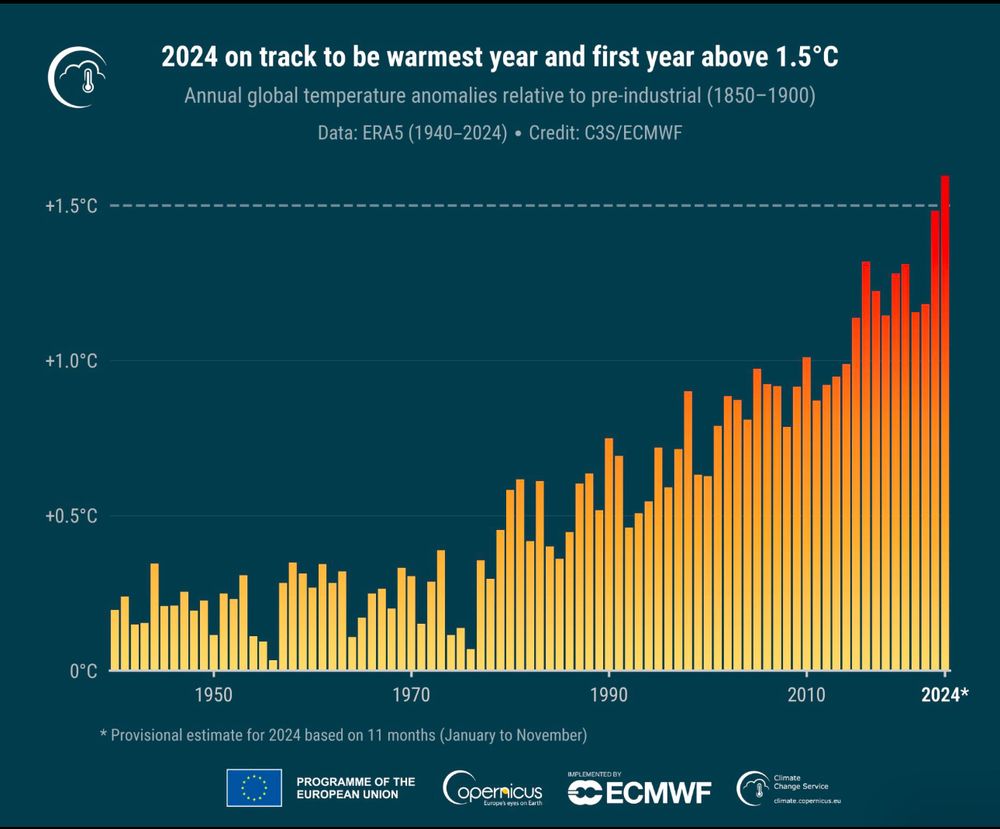
Climate data from @copernicusecmwf.bsky.social shows, it is virtual certainty that 2024 will be the warmest year on record and the first calendar year above 1.5°C.
This does not mean the Paris Agreement has been breached, it means ambitious #climateaction is more urgent than ever
🧪⚒️🌏🌡️📈
09.12.2024 07:26 — 👍 312 🔁 167 💬 9 📌 16


Now brace for the bad news... Water is super warm here (29C, 84F) and there is a lot of bleaching, all the way down to the deep reefs. All of the fire corals (Millepora) that I saw were bleached, as well as about 20% of the critically endangered Elkhorn Coral (Acropora palmata).
07.12.2024 12:30 — 👍 54 🔁 18 💬 3 📌 6

Hidden heatwaves and severe coral bleaching linked to mesoscale eddies and thermocline dynamics - Nature Communications
Hidden marine heatwaves, associated with ocean eddies that modulate undersea internal waves, threaten coastal ecosystems by driving unexpected sub-surface heating and severe coral bleaching and mortal...
🌊 Flashback: Internal-wave cooling mitigates 🌡️ thermal stress during marine heatwaves, creating hidden (temporary?) #ClimateRefuges for #mesophotic #CoralReefs.
Revisit the paper: t.ly/B2Atg🔗
🌏 How can we use these insights to enhance conservation in understudied regions like the Coral Triangle?
09.12.2024 02:50 — 👍 6 🔁 1 💬 0 📌 0
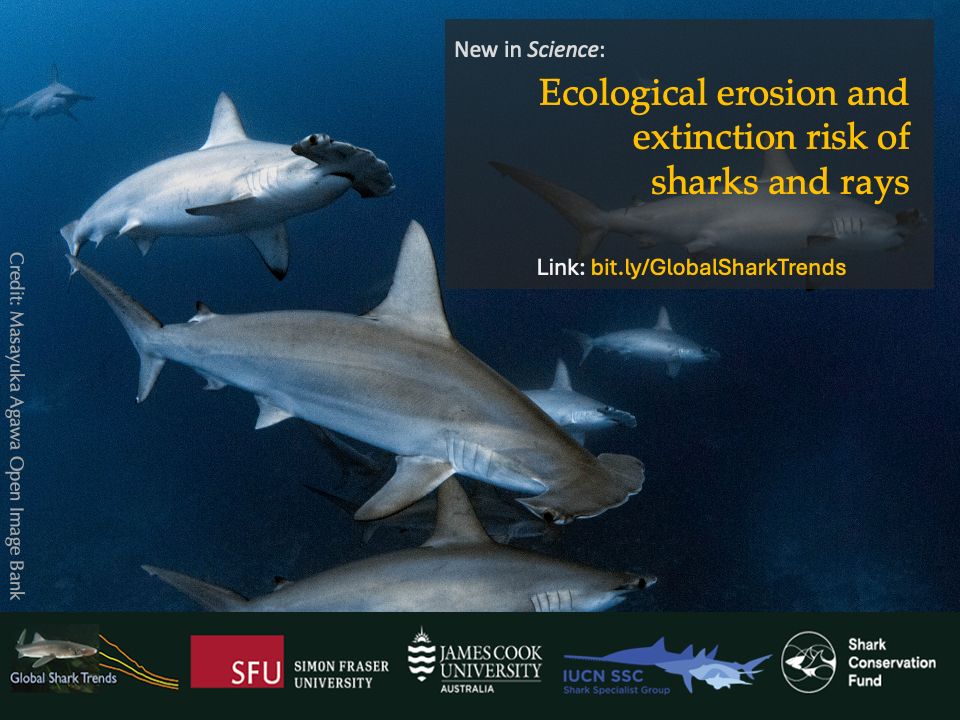
Scalloped hammerhead sharks (Sphyrna lewini) IUCN Critically Endangered © Masayuki Agawa_Ocean Image Bank
New #GlobalSharkTrends study published in @science.org reveals #overfishing has more than halved shark & ray populations over the past 50-years causing widespread erosion of ecological function and exceptionally high extinction risk
👉Full article bit.ly/GlobalSharkTrends
🧵1/20
05.12.2024 22:04 — 👍 188 🔁 124 💬 4 📌 13
PhD Candidate @RutgersNB | Host microbe interactions | Microbial interactions | Symbiosis| Multi-omics | Bioinformatics
Proud bun dad 🐰
Research Scientist at the #Shark Research Foundation 🦈
Interested in the biophysical drivers of the movement and behaviour of #MarineMegafauna 🐋🐢🦭🐟
Official Bluesky feed for #rEvoRebreathers - the rEvolutionary Rebreather -
👉 https://www.revo-rebreathers.com
📸 https://www.meandmyrEvo.com
Facility for Stable Isotope Ecology in CER, Kyoto U. (w Kei Koba, he/him). Papers using stable isotopes I just found, status of our IRMSs. http://www.ecology.kyoto-u.ac.jp/~keikoba/english/KobaEnglish.html
An extension of the Argo program to include biogeochemical observations
https://biogeochemical-argo.org/
Chief Scientific Officer at National Oceanography Centre, UK
Digital platform to empower collective ocean regeneration efforts.
We are uniting Ocean NGOs, companies & people on a mission to safeguard and regenerate the waters of the world.
Following people to build our global community.
www.yourdevocean.com
IsoCamp is a 2-week short course in stable isotope science where students get to learn from expert instructors and have hands-on instrument training.
#MarineEcology, Mister #AMBI. To assess the marine ecological status you have found the right person! Coordinator of #GES4SEAS project Member #CERF (Odum Award 2025) #ECSA Chief editor #Frontiers in Ocean Sustainability, associate edit CSR #Elsevier #AZTI
Marine Alliance for Science & Technology for Scotland is a consortium of 20 research organisations engaged in #MarineScience 🌊Sign up for our newsletter
Senior Research Aquarist at KAUST, with interest in understanding coral reef ecosystems. Working on coral reproduction and coral reef restoration.
Biochemical ecologist 🧪| co-leader of SouthernSharkEG | Flinders #shark and #ray trophic ecology 🦈🌯| Rugby player 🏉| 🏳️🌈 (she/her)| 🐕 mum
Environmental Data Science is an #OpenAccess journal @cambridgeup.bsky.social dedicated to the use of data science & AI to enhance our understanding of the environment.
Professor of marine biology at James Cook University, Australia - #biodiversity #coralreefs #fish #sharks #stress #physiology #evolution #conservation #climatechange #physioshark #TEDx #LGBTQ #STEM
Long term ecological research on southern California kelp forests
Professor, biogeochemist, stable isotope aficionado
PhD candidate at Flinders University, studying the diet and movement of co-occurring sharks and rays in Australia.
Queer, alternative, neurodivergent 🌈
She/they
At the UC Davis Coastal and Marine Sciences Institute and
Bodega Marine Laboratory, we dive deep into discovery, nurture marine stewardship, and outswim the ordinary.
PhD Mesophotic Coral Ecosystems
We accelerate knowledge of marine biodiversity to foster sustainable initiatives in research and for the blue economy
🔗 embrc.eu













